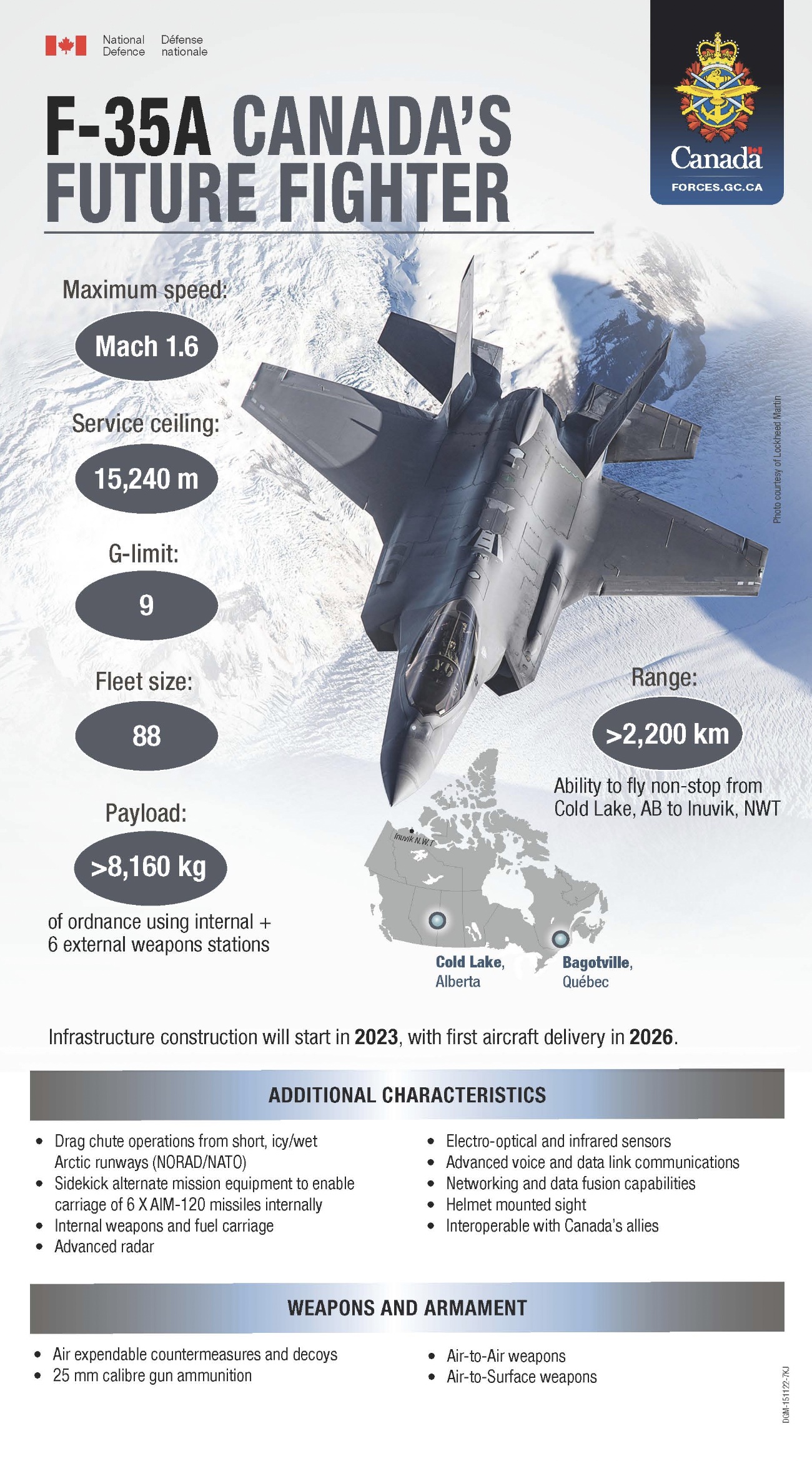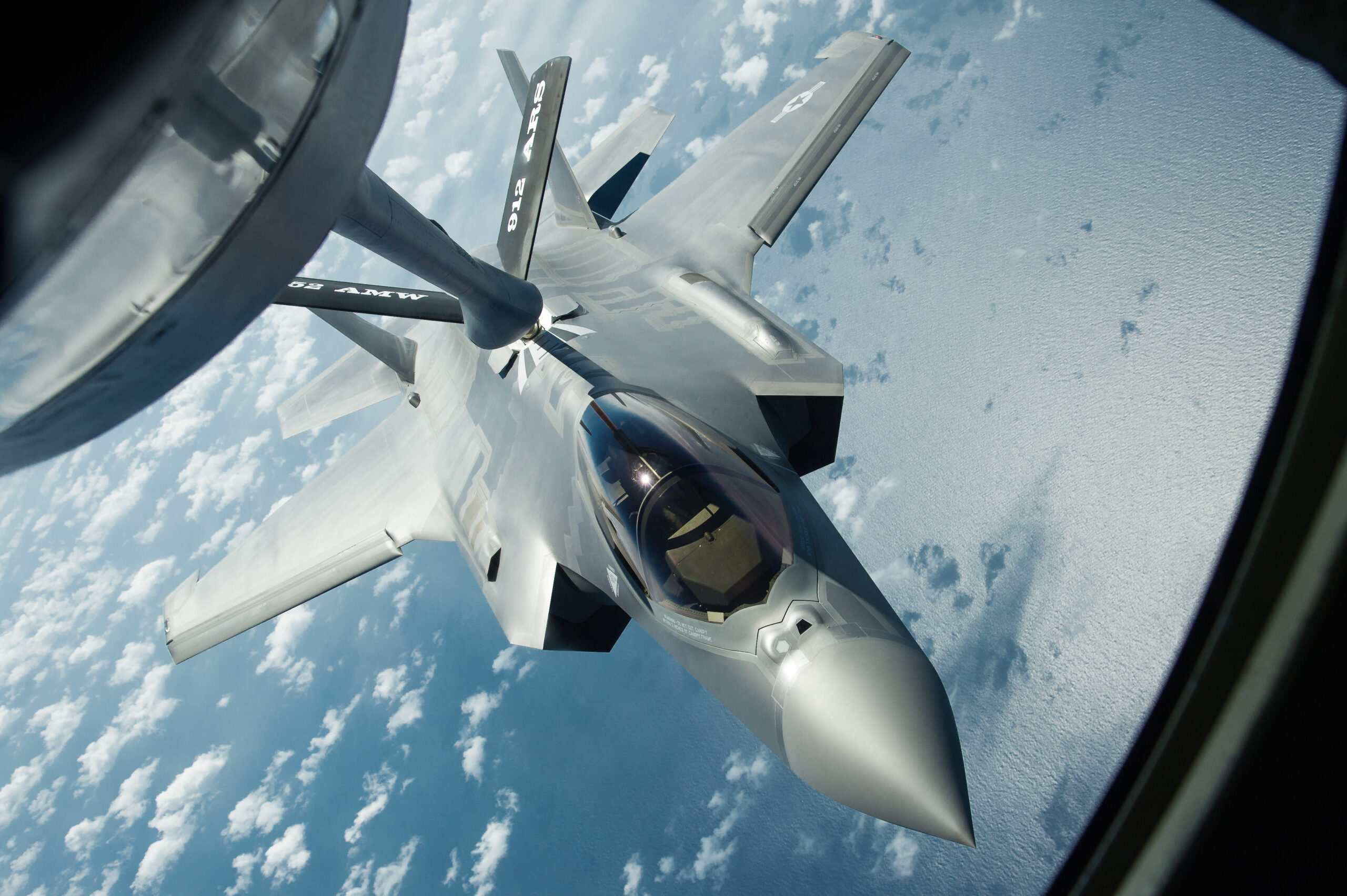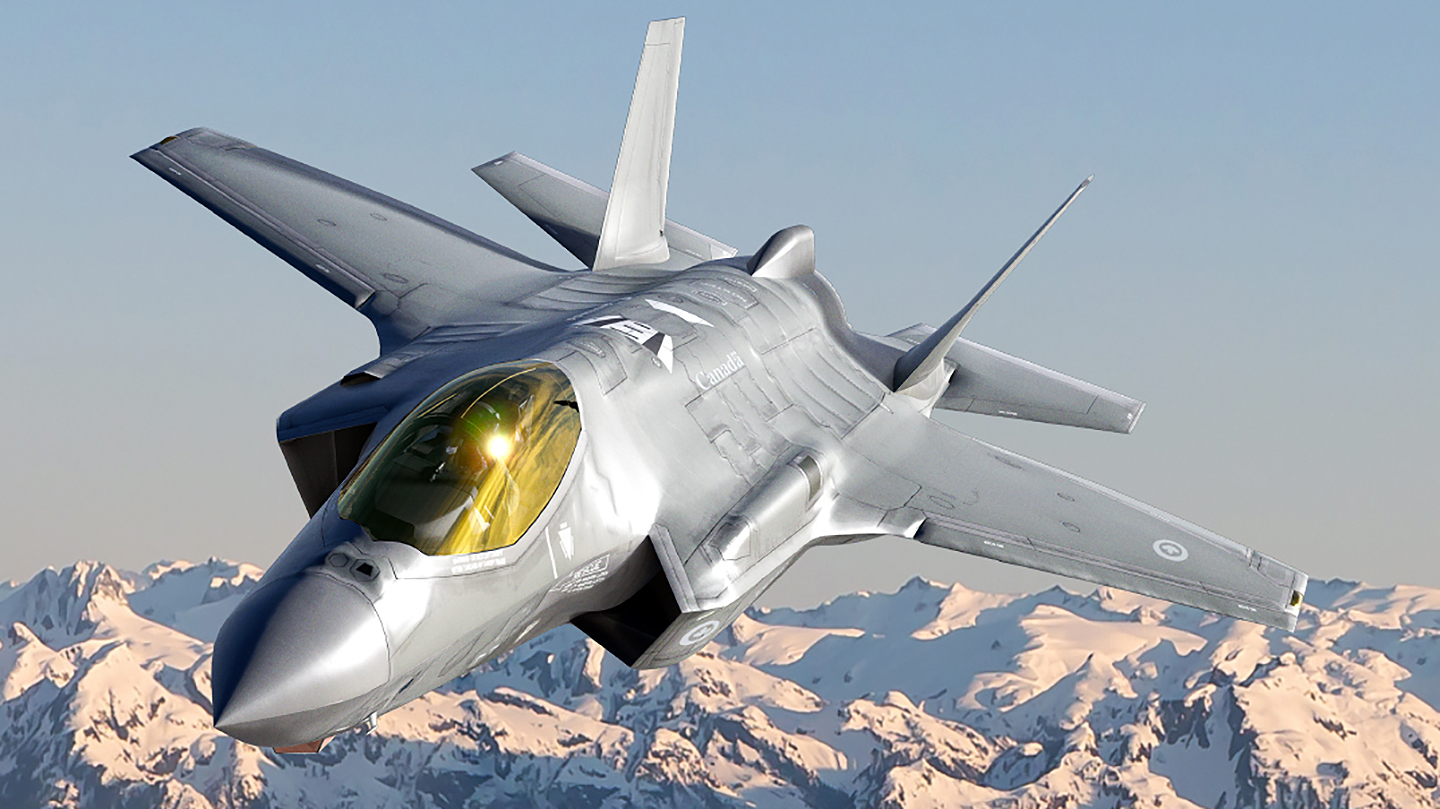Canada has finalized a deal with the U.S. government and Lockheed Martin for the procurement of 88 F-35A Lightning II stealth jets, the first of which are expected to be delivered to the Royal Canadian Air Force (RCAF) in 2026. This looks to bring what has been a prolonged and fraught procurement process to a close, some eight years after Justin Trudeau publicly promised not to purchase any F-35 jets before becoming the Canadian Prime Minister in 2015. You can read our previous report from March 2022 on Canada’s selection of the F-35A to replace its fleet of aging CF-18 Hornets, as part of the Future Fighter Capability Project, here.
Separate announcements made on January 9 by Anita Anand, Canada’s Minister of National Defense, and the F-35’s manufacturer, Lockheed Martin, outline new details about the delivery of the aircraft as well as the cost of Canada’s F-35 program. The Canadian government’s estimated investment for the project is $19 billion (the Canadian government’s previous estimate as of March 2022 was between $12 billion and $15 billion). According to Ottawa, this covers the cost of the aircraft, sustainment set-up and services, as well as the construction of fighter squadron facilities at 3 Wing in Bagotville, Quebec and 4 Wing in Cold Lake, Alberta. David Pugliese at the Ottawa Citizen reports that Canadian national defense officials confirm the project will cost around $70 billion in total across the life of the F-35s. Each F-35 will cost around $100 million to acquire. The government projects that the “full operational capability” of the F-35 fleet will be achieved between 2032 and 2034.
Other key details have also emerged in the wake of the announcement. Canada’s CBC reports that a senior Canadian defense official confirmed on January 9 that Lockheed Martin’s latest Lot 18, Block 4 F-35As will be delivered as part of the package, which feature a wide-range range of improved technologies and weaponry. An infographic Tweeted by the RCAF also noted the claimed advantages of Canada’s future fighter. This includes:
- A flight range greater than approximately 1,367 miles (2,200 km), with the ability to fly non-stop between Cold Lake, Alberta to Inuvik, in Canada’s North Western Territories.
- A drag chute used to slow the aircraft down in icy conditions. These are currently only in use on Norweigan F-35s, and are a particular feature of aircraft used in arctic conditions.
- A ‘sidekick’ devise, allowing for 6 AIM-120 missiles to be carried internally instead of 4.
- A payload greater than 17,989.72 lbs. (8,160 kgs) of ordnance combining internal and external weapons stations.

In official renderings of Canada’s F-35 variant, we see a standard F-35A boom refueling receptacle on the jet. This could just be a mistake or it could indicate the jets will require a boom-equipped tanker. Currently only the F-35B and C have probes to make them compatible with hose-and-drogue tankers. There is also the possibility that Canada’s F-35As could be the first of the conventional takeoff and landing (CTOL) A variant to receive refueling probes which, as we explained previously, would comprise a special configuration. This would allow the RCAF’s fleet of F-35As to refuel from the service’s future tanker selection, the Airbus A330-based Multi Role Tanker Transport, which is currently not disclosed as being configured with a boom. The current Polaris tankers and C-130s do not have booms either. Canada’s CF-18 Hornets use the hose and drogue system. It’s possible that Canada’s future MRTTs will receive booms, which offer fuel flow and connecting advantages over the hose and drogue, as part of the F-35 selection, but at this stage, we simply do not know for sure if this will be the case. A boom equipped MRTT would also offer far better interoperability with U.S. and other NATO aircraft. Alternatively, the F-35s could be built with both a probe and a receptacle for fully flexible operations.

“This is an important milestone in the significant process to purchase modern fighter jets for the Royal Canadian Air Force and an example of an open, fair and transparent competitive procurement,” Helena Jaczek, Canada’s minister of public services and procurement indicates. “Canadians take great pride in their armed forces, and it is more important than ever to ensure that those who serve our country have the right equipment to keep Canada safe and secure.”
U.S. Air Force Lt. Gen. Mike Schmidt, program executive officer at the F-35 Joint Program Office, said the following about Canada’s selection of the F-35. “[Canada’s] decision to procure almost 90 jets underscores the value of the incredible F-35 Lightning II. The F-35 is the best in the world, providing unmatched interoperability to America, Canada and the additional 15 nations that have selected the fighter … Through power-projection, the F-35 is at the tip of the spear for deterrence. Its forward presence will continue to ensure that potential adversaries choose diplomacy over armed conflict.”
Canada’s F-35 procurement saga has been years in the making. Back in 2010, recognizing the need for a new fighter jet, the country’s Conservative government announced plans to buy 65 F-35As. Yet, with the election of the Liberal Party in 2015 – led by Prime Minister Justin Trudeau – the F-35’s future in Canada looked uncertain following Trudeau’s very public criticism of the aircraft as the wrong choice for the RCAF.

The current version of the country’s Future Fighter Capability Project (FFCP) was launched in 2017. While it was expected that the F-35 would be the front-runner for the competition, for a while at least it seemed as if the aircraft was disqualified altogether. Plans were set to buy a smaller number of Super Hornets as “interim” fighter jets instead, which was derailed as a result of a trade dispute between the Canadian government and Boeing. In the wake of this, the government went ahead with the purchase of a batch of ex-Royal Australian Air Force F/A-18A/B Hornets, which proved to be controversial and was heavily criticized at the time. The F/A-18E/F Super Hornet Block III was knocked out of the competition in December 2021, and in March 2022, the F-35 was announced as the government’s preferred selection.
The F-35 has proved a highly successful export for Lockheed Martin around the world, with recent customers including Germany – the country, in fact, clinched an $8.4 billion purchase of 35 F-35 aircraft from the U.S. in December 2022 – as well as Switzerland and Finland. Having joined the Joint Strike Fighter program shortly after it started, Canada is already a Tier 3 partner, alongside Australia, Denmark and Norway. Italy and the Netherlands are Tier 2 partners, and the U.K. is a Tier 1 partner. The U.S. remains Lockheed Martin’s F-35 primary customer base. Indeed, there are potential benefits in terms of interoperability and logistics for Canada in having its own fleet of F-35s, with the country having already invested roughly $613 million in the Joint Strike Fighter between 1997 and 2021, especially in future NATO coalition operations, as well as its obligations to NORAD (North American Aerospace Defense Command) alongside the United States. There are also drawbacks, as well.
Regardless, Canada having finally closed a deal for its own F-35s highlights the incredible reversal of fortunes for the jet in that country – particularly given the strong opposition to it by Prime Minister Trudeau in the not too distant past. Above all else, replacements for the RCAF’s geriatric Hornets is finally on the horizon.
Contact the author: oliver@thewarzone.com
